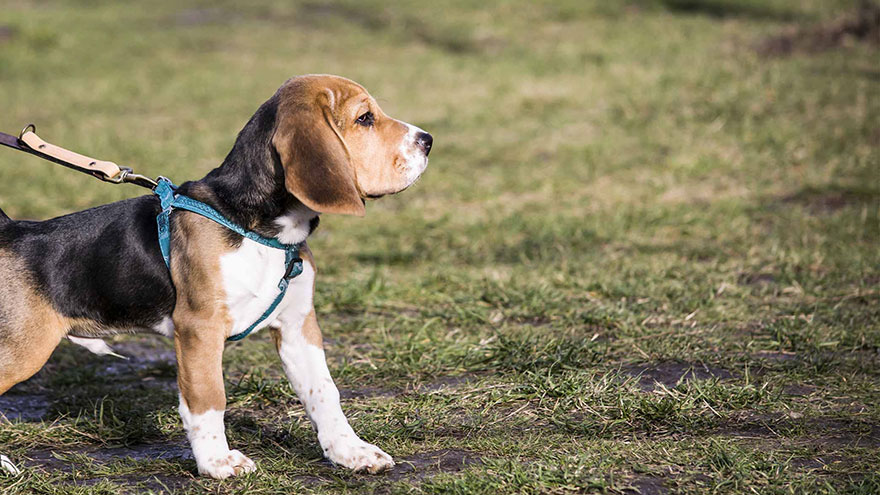Mini Beagle Information
Mini beagles are also known as pocket beagles. The name implies the mini beagle is a cousin to the standard beagle used in hunting and in the field.
As every dog variety has its enthusiasts, so too does the miniature beagle.

History
The miniature beagle had its start in England as a hunting hound. It was the right size to be carried in a hunter’s saddlebag until the hunted animal scurried into hiding. The small beagles were then released to chase small game, especially hares, through low-lying thickets and brush. It was given the name of Olde English Pocket Beagle because of the manner in which it was carried.
These hounds were popular with the royal family. Queen Elizabeth I enjoyed pocket beagles as house pets. These dogs reached 9 inches when measured from the shoulder to the ground. Some beagles known as glove beagles could fit inside hunting gauntlets. Edward II and Henry VIII owned these smaller hunting hounds.
As hunting habits changed, the standard for beagles changed to favor hounds, which were larger and able to keep up with the horses their masters rode. In a book written by E. Fitch-Daglish in 1961 titled “The Beagle,” the author states that in the 1920s pocket beagles became uncommon in field trials or shows. By the 1930s miniature beagles had almost disappeared. Since the 1970s some breeders have attempted to restore the miniature beagle as a recognized breed.
RELATED :: Owning a Beagle : Breeder Recommendations
Function
Pocket beagles are primarily family dogs. They are not useful as hunting or field trial dogs but can be shown in American Kennel Club shows if they display the standard features of a beagle. The AKC recognizes two varieties of beagles for show: those which are over 13 but not over 15 inches tall and those which are 13 inches and smaller.
Mini beagles are not recognized as a special breed by the United Kennel Club or the AKC. Members of the beagle family are often used to detect illegally imported materials and drugs because of their excellent sense of smell. They are also used to detect insects such as termites.
Identification
The pocket beagle should look like a much tinier version of an English foxhound. It should not be more than 11 inches in height.
The beagle has longer ears that stretch almost to the tip of the dog’s nose. The body is solid and has well-developed muscles. Almost any color and markings are accepted. Most common are black and tan markings on a white background.
Size
Today’s miniature beagle stands from 7 to 12 inches tall and weighs from 7 to 15 pounds. Queen Elizabeth Pocket Beagles are from 6 to 12 inches in height and from 4 to 25 pounds.
Warnings
- Controversy exists over whether the present day miniature beagle represents a true variety within the beagle family or is the result of poor breeding. Some dealers obtain the miniature quality by breeding beagles with dachshunds. Others attempt to pass the runt of a litter off as a mini beagle. Some miniature beagles have a condition called chondroplasia, which dwarfs their bodies and makes their front legs look like those of a basset hound.
- Anyone interested in purchasing a miniature beagle should check the pedigree of the parents and the dog’s ancestry. A true pocket beagle will be registered with the Olde English Pocket Beagle Registry, a registry started in 2000 as an attempt to restore pocket beagles as a breed. Queen Elizabeth Pocket Beagles are a separate variety of miniature beagles. The breed is recognized by the International All Breed Canine Association and the name and breed is trademarked. All Queen Elizabeth Pocket Beagles must have a Queen Elizabeth Pocket Breeds Foundation birth certificate.
You Might Also Like :: Beagle : 10 Most Common Questions

